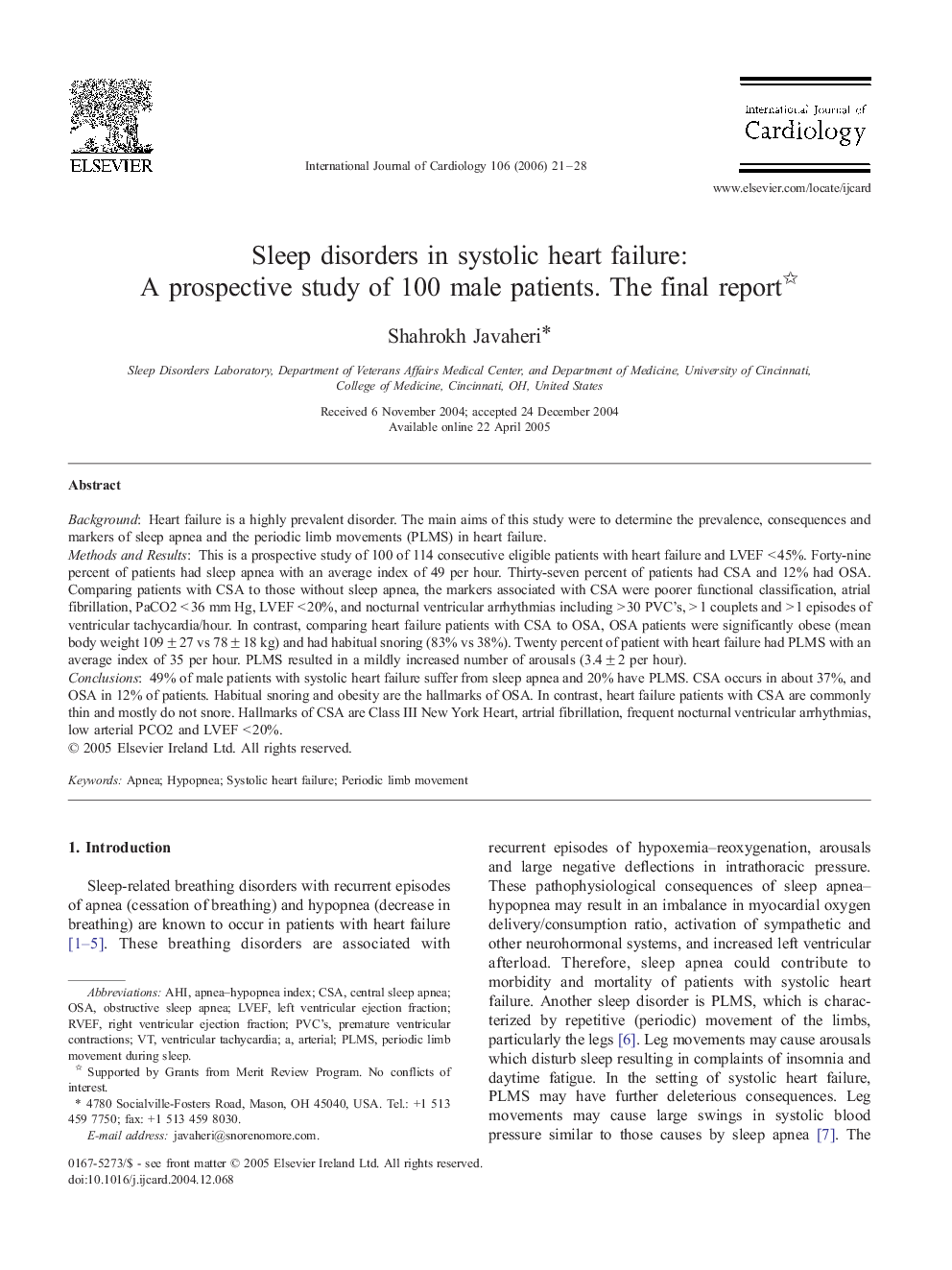| Article ID | Journal | Published Year | Pages | File Type |
|---|---|---|---|---|
| 2937039 | International Journal of Cardiology | 2006 | 8 Pages |
BackgroundHeart failure is a highly prevalent disorder. The main aims of this study were to determine the prevalence, consequences and markers of sleep apnea and the periodic limb movements (PLMS) in heart failure.Methods and ResultsThis is a prospective study of 100 of 114 consecutive eligible patients with heart failure and LVEF < 45%. Forty-nine percent of patients had sleep apnea with an average index of 49 per hour. Thirty-seven percent of patients had CSA and 12% had OSA. Comparing patients with CSA to those without sleep apnea, the markers associated with CSA were poorer functional classification, atrial fibrillation, PaCO2 < 36 mm Hg, LVEF < 20%, and nocturnal ventricular arrhythmias including > 30 PVC's, > 1 couplets and > 1 episodes of ventricular tachycardia/hour. In contrast, comparing heart failure patients with CSA to OSA, OSA patients were significantly obese (mean body weight 109 ± 27 vs 78 ± 18 kg) and had habitual snoring (83% vs 38%). Twenty percent of patient with heart failure had PLMS with an average index of 35 per hour. PLMS resulted in a mildly increased number of arousals (3.4 ± 2 per hour).Conclusions49% of male patients with systolic heart failure suffer from sleep apnea and 20% have PLMS. CSA occurs in about 37%, and OSA in 12% of patients. Habitual snoring and obesity are the hallmarks of OSA. In contrast, heart failure patients with CSA are commonly thin and mostly do not snore. Hallmarks of CSA are Class III New York Heart, artrial fibrillation, frequent nocturnal ventricular arrhythmias, low arterial PCO2 and LVEF < 20%.
